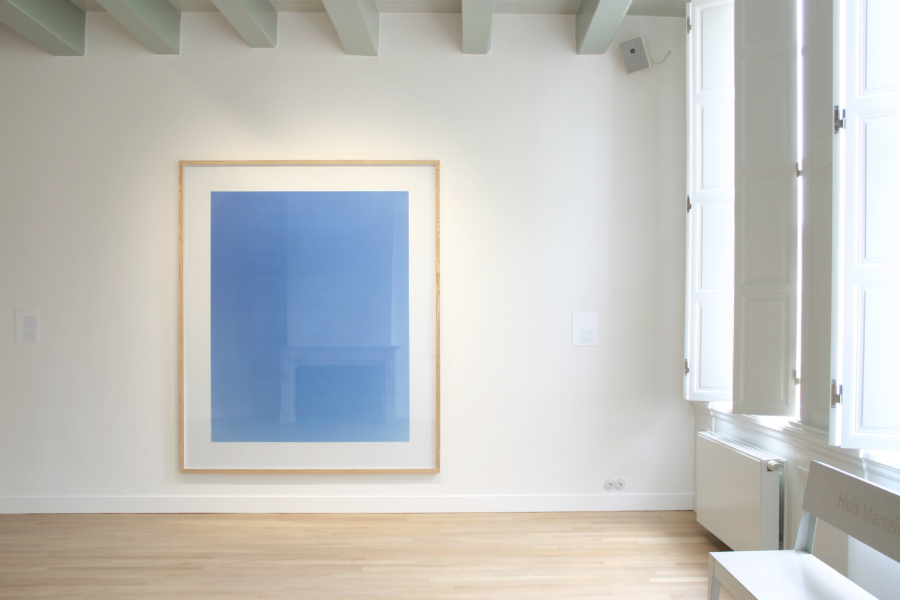simonvantil@gmail.com
cast bronze,
cast from a pre-Columbian double-chambered
vessel attributed to Chimú culture, ca AD 900-
1470, and two Roman coins, ca. AD 69-79 and
AD 81-96.
25x15x12 cm.

Camera, 2025
cast bronze,
25x15x12 cm.

vessel, attributed to Chimú culture, dated between AD
900-1470. The double-chambered vessel in the shape of
two jaguars was once a ritual object that supported the
crossing to an afterlife as burial gift. Cast with its openings
covered by ancient Roman coins, defaced by having drilled
pinhole apertures at their centres, the ceremonial vessel
that was once lifted from the darkness of a grave is now
repurposed as an optical instrument.
Made up of artefacts made by two ancient civilizations
separated by geography and moment in time, this cast
bronze sculpture accumulates and amalgamates the past
by reusing these objects pragmatically but subversively.
Holding two parallel representations of the visible world
as a double camera obscura, perhaps parallelling binocular
human eyesight, the sculpture is positioned in between
existing reality and its immaterial representation, present
and past, life and death.
in a camera obscura.
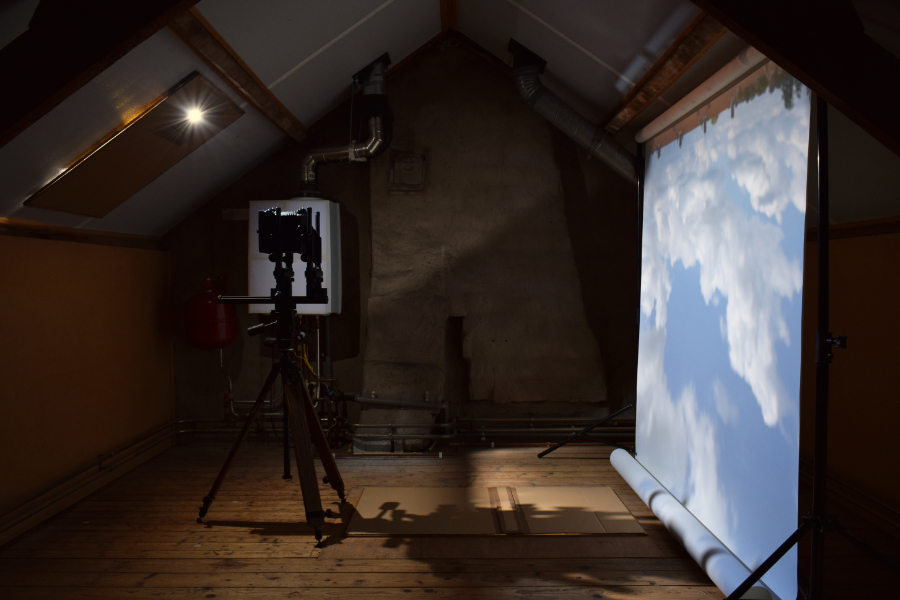
photogram, silver gelatin print,
40x120 cm.
Framed 90x180 cm.
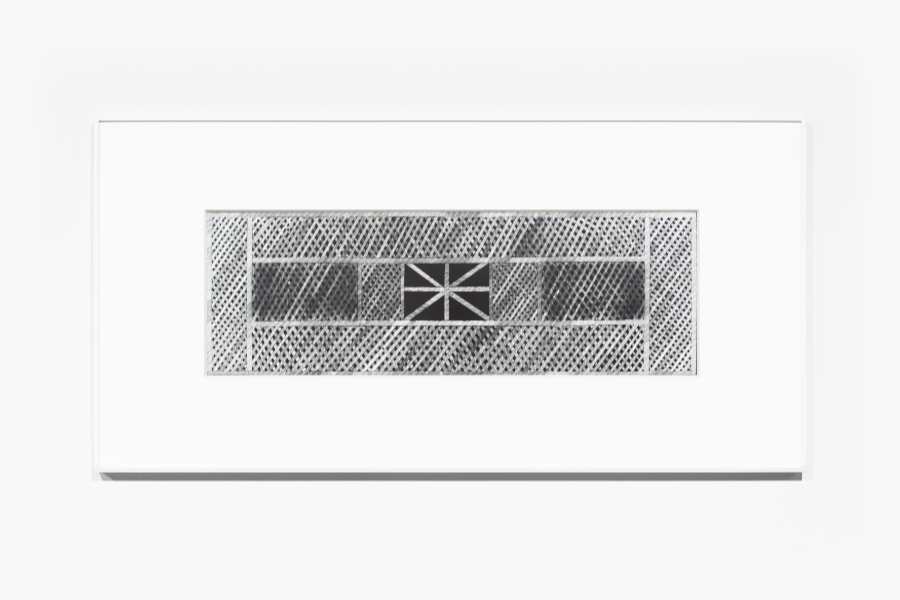
photogram, silver gelatin print,
40x80 cm.
Framed 90x140 cm.
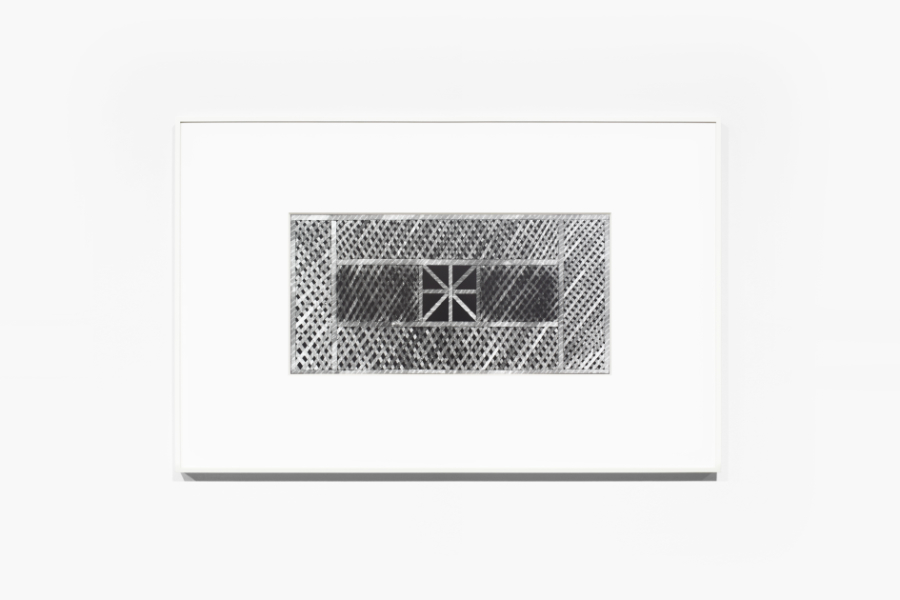
Orchard is known for its frescos that adorn the walls
of two bedroom spaces, offering views onto an orchard
through life-like representation. This multi-part work
looks at the imitation of nature and early history of
Western painting through the historical beginning of
photography in the form of the photogram.
These lush views are however starkly reduced to the
painted pergola panels that circumscribe the blue bed-
room. The panels are each copied as photograms by
exposing a lattice structure made of cherry tree leaves
on b/w paper, resulting in an image of a lattice frame-
work on a black ground, identical to the original painted representations.
photogram, silver gelatin print,
40x80 cm.
Framed 90x140 cm.
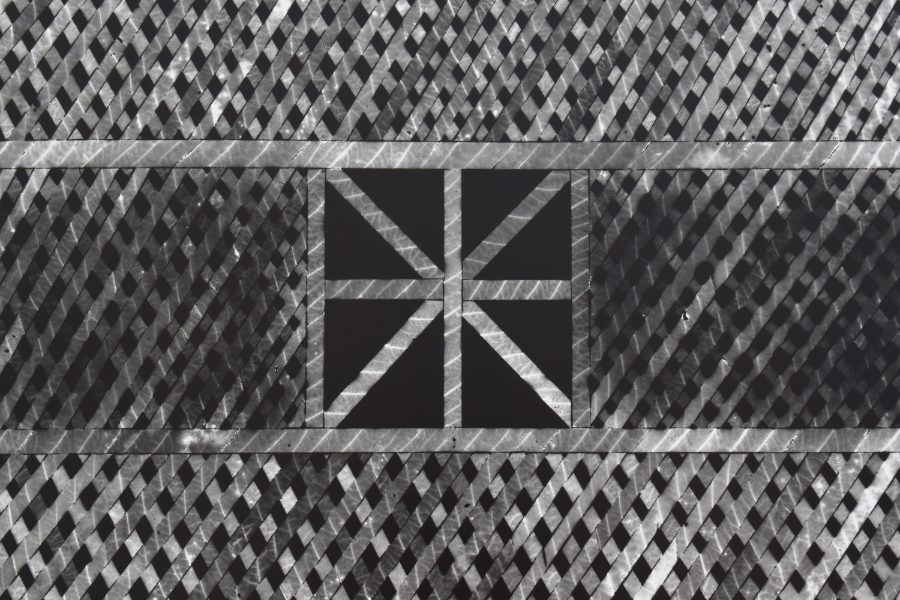
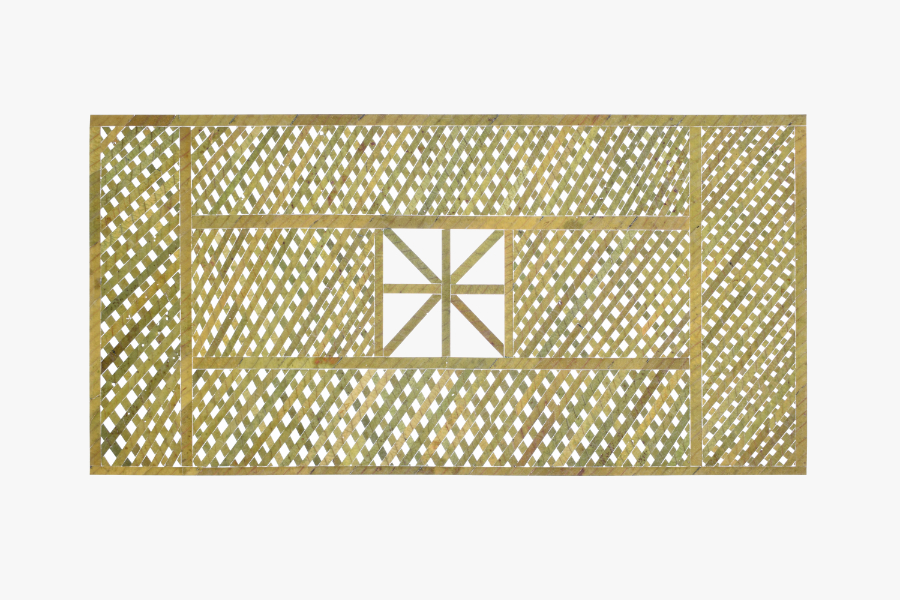
held together with cellulose tape, 2024-2025
photogram, silver gelatin print,
40x120 cm.
Framed 90x180 cm.
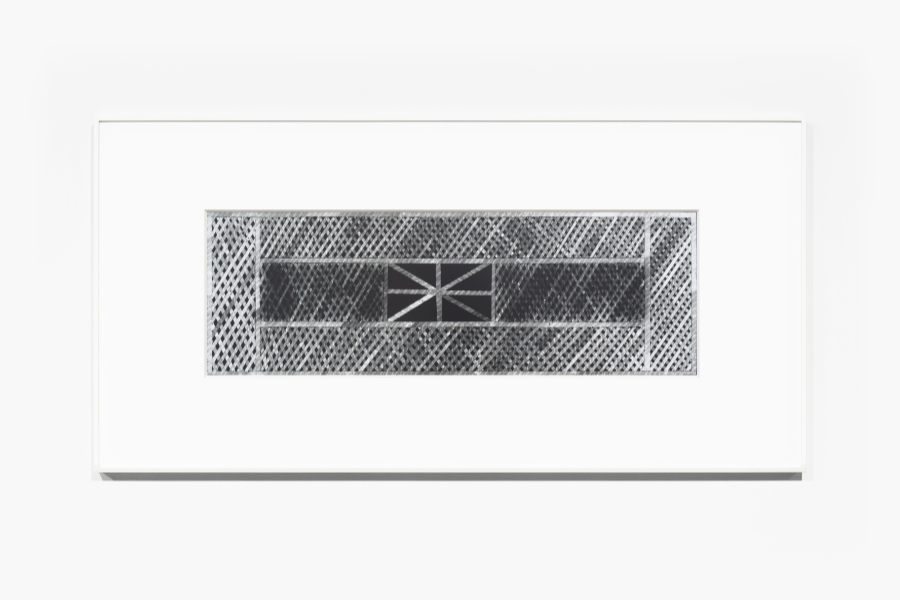
Foam Fotografiemuseum, Amsterdam
January 19 - March 28, 2018
Traveled to
C/O Berlin, Amerika-Haus, Berlin (DE)
September 29 - December 1, 2018
Traveled to
Mai Mano Haz, Hungarian House of
Photography, Budapest (HU)
February 1 - March 17, 2019
The traveling exhibition Back to the Future,
the 19th century in the 21st century, paired
19th-century photography with contemporary
practices, drawing parallels in motifs, methods
and means.
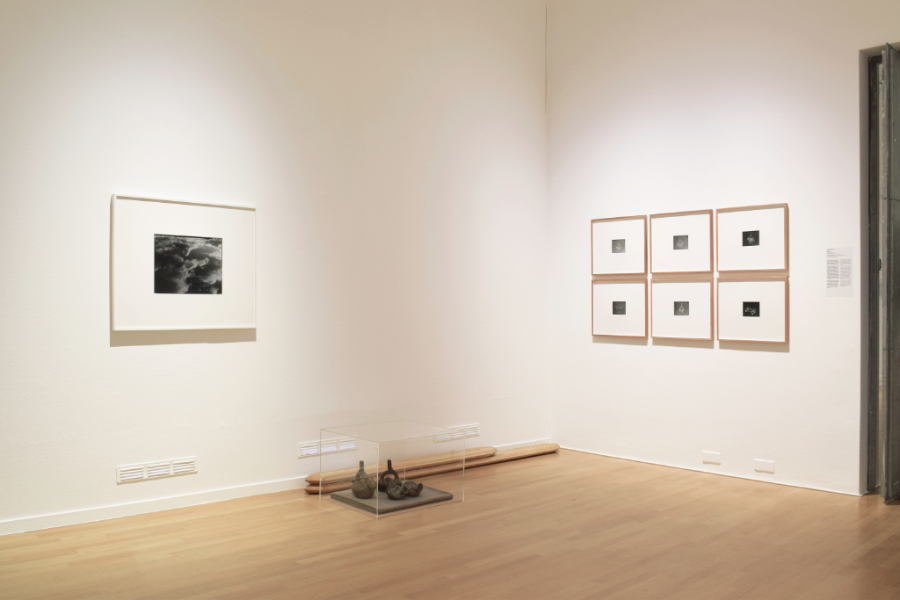
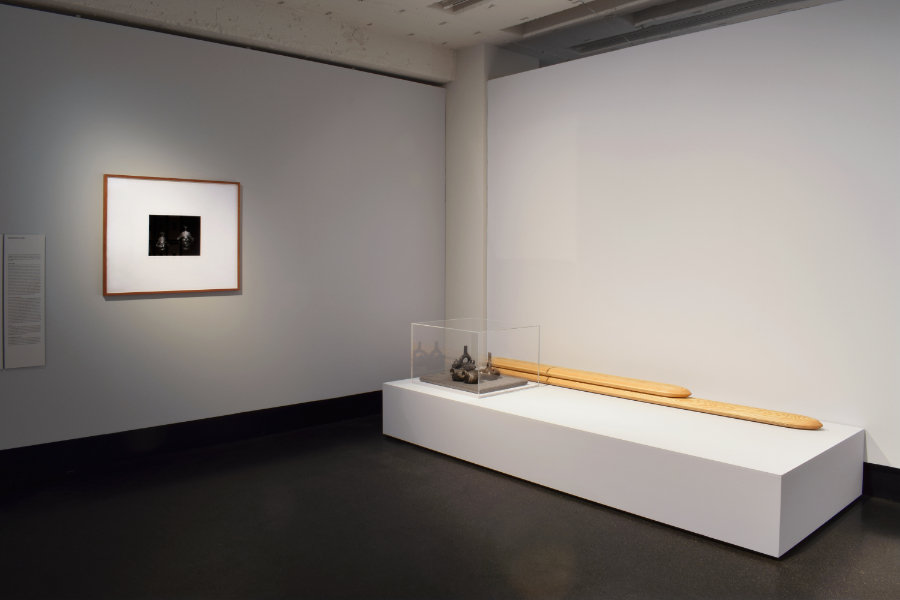
two silver gelatin prints,
each 28,5x36 cm.
Framed 72,5x85 cm.

Chimú burial vessels. Photographed inside a darkened
tent with a small hole in the top, the objects were lit
by daylight during exposures that lasted up to several
hours, gradually appearing from the darkness. Yet,
as a result of erroneous double exposures on already
exposed film, the artefacts almost disappear from the
pictures instead. Brought forth by a civilization long lost,
these vessels persist, to continue to exist, but remain
perpetually elusive.
detailed view of Untitled, 2015-2018-2023,
two silver gelatin prints, each 28,5x36 cm.
Framed 72,5x85 cm.

two silver gelatin prints, each 28,5x36 cm.
Framed 72,5x85 cm.

the 19th century in the 21st century,
C/O Berlin, Amerika-Haus, Berlin (DE)
2018
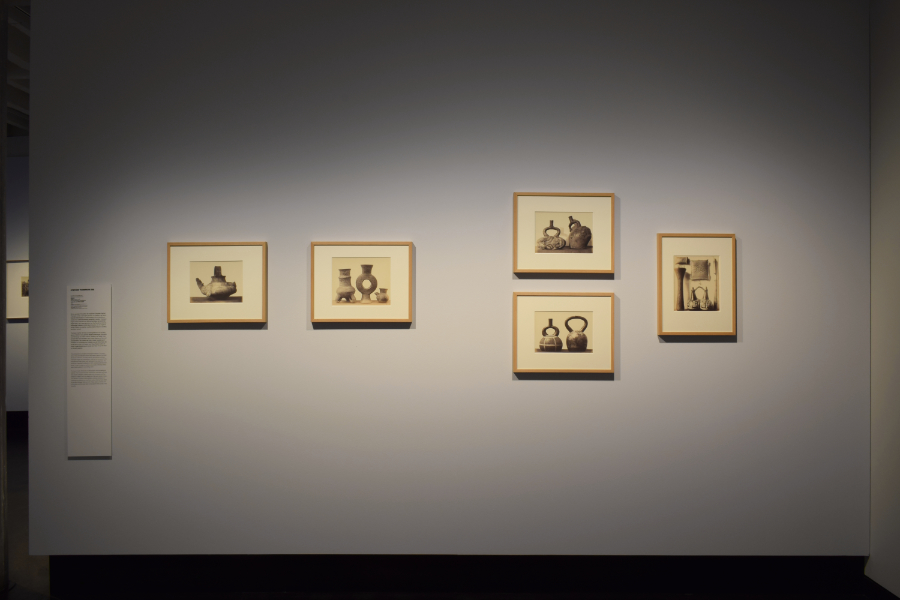

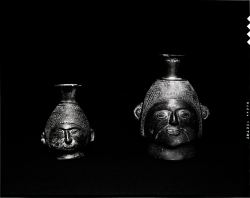
Two Chimú-Inca Vessels, 2012
double exposed photograph,
both vessels photographed
individually in two different
locations on a single 4x5" film.
silver gelatin print, 28,5x36 cm.
Framed 78x90 cm.
three ritual pre-Columbian Chimú
burial vessels, ca. AD 900-1470,
wool blanket, two ash wood elements

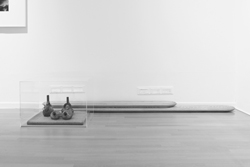
Installation view of Back to the Future,
Foam Fotografiemuseum, Amsterdam.
notions of reproduction and transformation. A small
show at an antiquarian's shop in 2015 centered on
the removal of six pre-Columbian vessels attributed
to Chimú culture, replaced by photographs of the
objects. A concurrent exhibition at De Ateliers in
Amsterdam then housed the vessels alongside other
sculpture. The work Current and Equivalent from
2018 consecutively compressed this installation of
disparate objects into a single sculpture, as a form
of duplication. Three vessels had been traded in the
meantime, destroyed abstract wood objects were
reinterpreted.

Untitled, 2015,
six pre-Columbian Chimú vessels,
this work is no longer extant.

Untitled, 2015, oak wood with
brass inlay, no longer extant.
chromogenic color print,
24x18 cm. Framed 26x20 cm.

of RMO, Royal Museum of
Antiquities, Leiden, NL
Huis Marseille Museum for Photography, Amsterdam,
September 7, - December 8, 2013
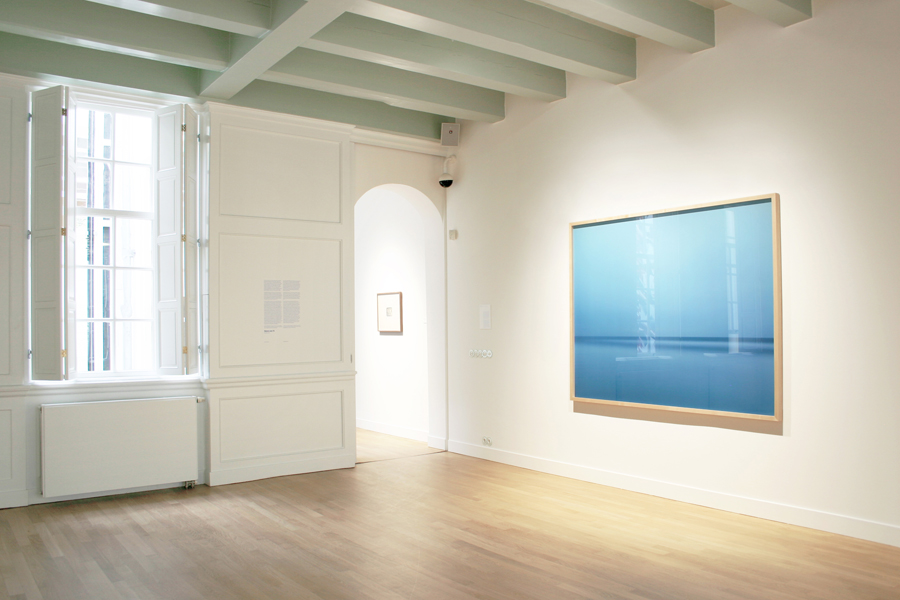
chromogenic color print, 149x190 cm.
Framed 153x194 cm.
The work Light over Horizon (sunset to nautical
twilight) shows a seascape photographed with an
extended exposure that started at sunset and lasted
till nautical twilight (the moment when the sun is
12 degrees below the horizon and all natural light
has disappeared from the atmosphere).
Inherently methodical, this photograph's exposure
time ran parallel to the full duration of twilight, as
daylight faded into darkness and the visibility of the
world slowly diminished, yet the actual exposure ran
counter to this decrease, accumulating more light
over time due to a gradual increase in aperture, star-
ting with the smallest lens opening and ending with
the widest.
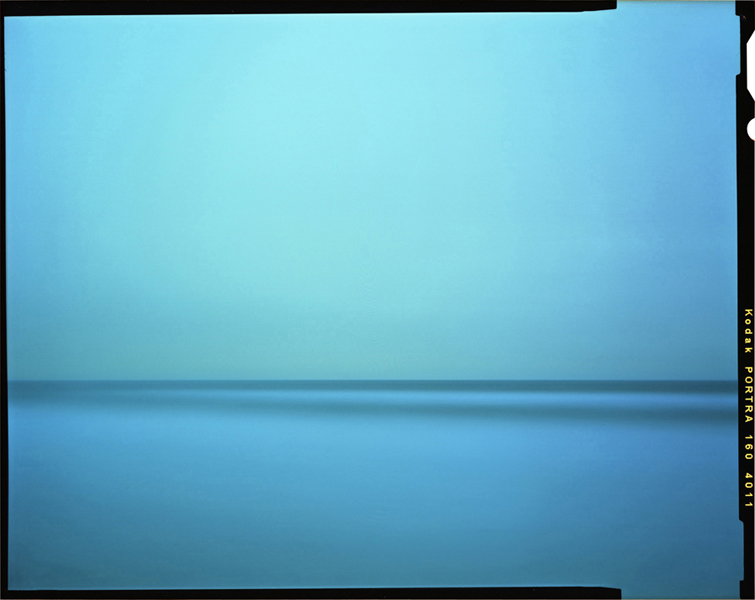

Installation view, The Rediscovery of
the World, Huis Marseille, 2013
Rijksmuseum, Amsterdam,
June 17, - September 17, 2017
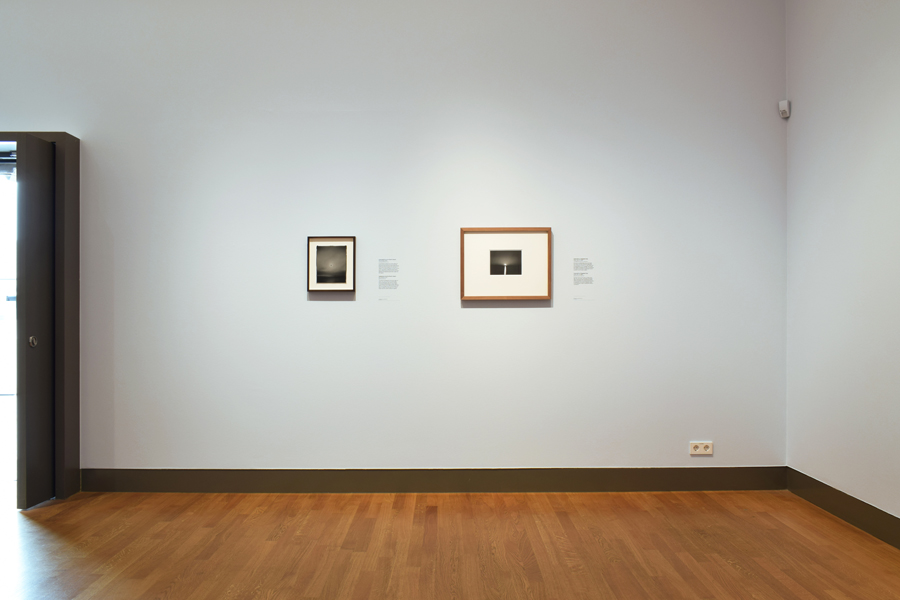

silver gelatin print, 16,5x21 cm.
original frame 100x150 cm.
This work is photographed with an exposure time
corresponding to the time it takes for light to travel
from the sun to the Earth, an accurate duration of
8 minutes and 19 seconds. Traveling at the speed of
light, an approximate 300.000 km/s, light crosses
an average distance of 150.000.000 km.
Looking out over an expansive sea, the camera is
operated not only as a means to produce an image,
but as a device to measure duration and distance.
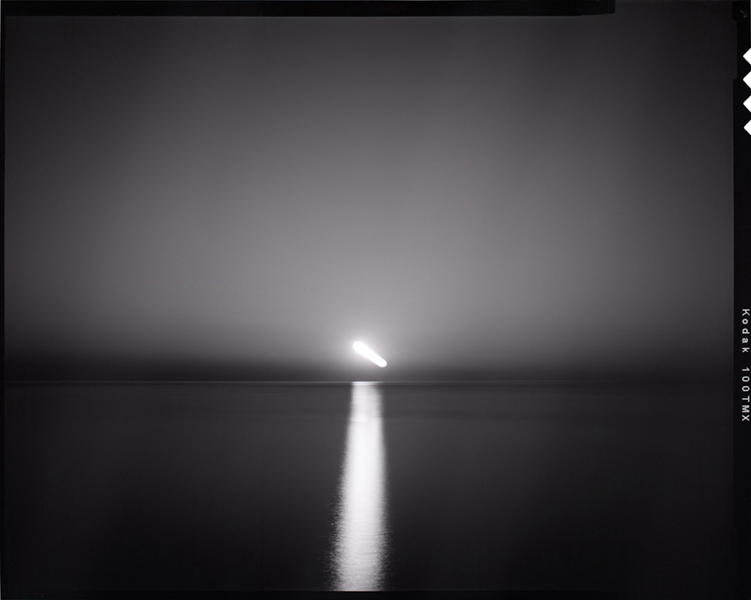

Location photograph,
From and To / Elongated View, 2011

Installation view, The Rediscovery of
the World, Huis Marseille, 2013
the collection of Huis Marseille at De Pont,
De Pont Museum, Tilburg,
February 15, - August 23, 2020
Moonlit Disk, 2012
photographed by moonlight,
chromogenic print, 160x200 cm.
Framed 164x204 cm.

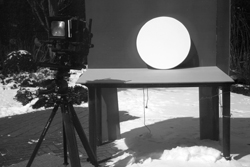
Location photograph, moonlit,
Moonlit Disk, winter 2012
photographed by moonlight,
silver gelatin print, 52,5x65,3 cm.
Framed 110x130 cm.
This work was photographed in
nighttime, by the light of a full
moon, and recorded a shadow
cast on the dark side of the Earth.

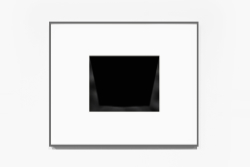
Umbra in Umbra, 2013
photographed by moonlight,
silver gelatin print, 52,5x65,3 cm.
Framed 110x130 cm.
Van Gogh Museum, Amsterdam, installed
throughout the permanent collection,
May 20, 2015 - January 17, 2016
Van Gogh Museum in Amsterdam, on display alongside
Van Gogh's paintings and drawings, was held on the occasion
of the commemoration of the 125th anniversary of Vincent van Gogh's death.
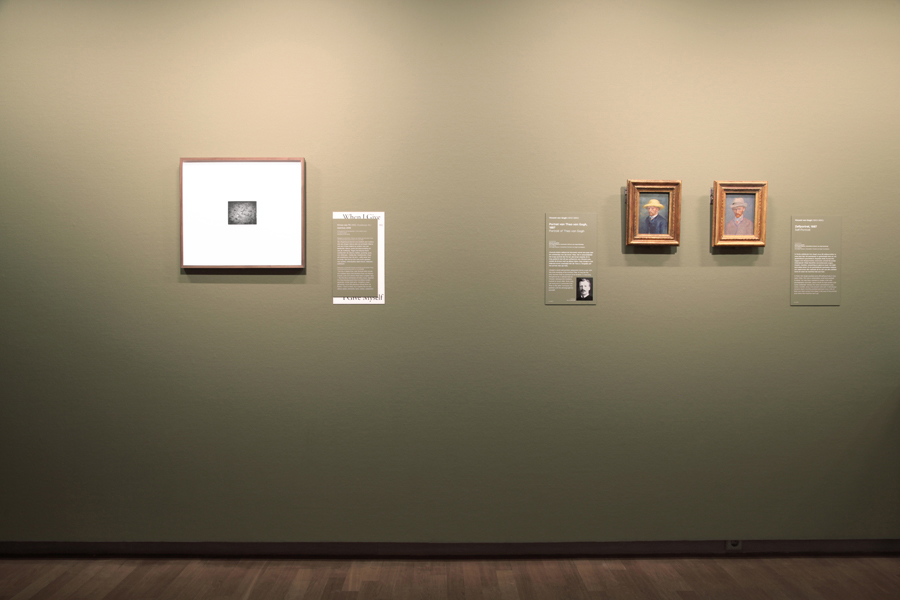



Untitled, 2015
double exposed photograph,
photographed by moonlight,
silver gelatin contact print,
10x12,5 cm. Framed 46x52 cm.
chromogenic print,
image 180x140 cm.
Framed 220x180 cm.
The monochromatic, photographic work Night is the
outcome of an exposure that corresponds to the precise
duration of night-time, from exact sunset till exact sunrise.
The work depicts a clear sky as if it was day, exposed by the
last light of evening and the first light of new morning.

Huis Marseille Museum for Photography, Amsterdam,
September 7, - December 8, 2013
